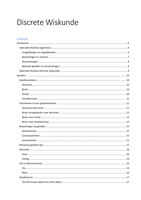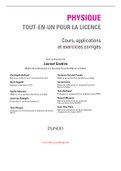Marginal Productivity and Factor Rewards
CPE
• CPE used labour theory of value: value of a product is the socially necessary labour time embodied in it e.g. 3 hours. This value cannot
be seen but the price can. Prices determined by factors of production. Although price does not equal value, they did not determine the link
between value and prices. They focused on supply in price determination.
1st Generation
• 1st Gen said prices determined by how much utility they yield at margin
• Pioneered ‘pure theory’: from maths then applied to economy
• Applied Ricardo’s theory of rent determined at the margin to utility, shifting focus to demand and ignoring value
• But all based on subjective utility; supply assumed fixed.
• Price is determined by utility at the margin. Individuals have diminishing MU, the MU at the moment e.g. 1st drink determines the price.
We do this for everyone and find the average i.e. aggregate marginal utility by considering how much each will pay and then see at what
price the market clears.
2nd Generation
• Elaborated technical aspects e.g. indifference curves, distinction between AP and MP noted formally
• Marginalism extended to supply side: considered marginal productivity and distribution and allocation of factors of production.
• Demand and supply analysis completed so we now have price determination
• Extended marginalist principles from micro to macro level
• Was partial equilibrium; small change in chosen market but no changes in rest of econ- Keynes said it didn’t apply to macro side
• Marshall’s aim: Go with the Marginal Utility tide, but ‘restore’ cost of production, though without the political economy (distribution to social
groups, etc.) - ‘Neo-classical’. Marginalists were apolitical, didn’t relate ideas to social discussion.
Marshall
• His partial equilibrium analysis had assumption of perfect competition.
• He believed that marginal utility is not the dominant factor in the determination of value.
• He combined the Ricardian emphasis on cost of production to explain the interaction between demand and supply
• In his view, price is determined by both the cost of production and marginal utility rather than one or the other
• Impact of Diminishing Returns
- Upward sloping supply curve- need higher price to produce more as MC rises due to diminishing MP
- Downward sloping demand for factors of production as MP falls for variable factor so firm is willing to pay less.
Determination of Price of Factors
• Neo classicals (Marshall) modelled factors of production as mutually substitutable inputs, their proportions being determined by their
respective marginal productivity and contribution to output. Marshall only considered capital and labour
• Each factor has a corresponding factor reward: which is homogenised. Same algebraic form e.g. in Cobb-Douglass prod function
• All factor rewards could be modelled homogeneously in terms of their contribution to output rather than being separately and socially
determine like the revenues of the social classes in CPE.
• 2nd Gen assumed that a factor were fixed- the variable factor has diminishing MP
• e.g if we assume land no longer the fixed factor but capital is then who ever has the fixed factor has market power- capital owners are
monopolists. Landowners no longer seen as monopolists who could extract an unfair distribution.
• Wages then become the residual
• We can determine the distribution now:
– (for labour): w = MPL*p= marginal revenue product of labour
– (for capital): profit = MPK*p
• This is a generalisation of Ricardo’s theory of rent, any factor not just land, may be the fixed factor whose return appears
as a differential surplus remaining after the variable factor, is paid at a rate established by its marginal productivity.
• Entrepreneur employs more units of input(L/K) until the cost (wage/profit) equals marginal revenue product
- e.g. extra worker makes £5 worth of output and wage is £3 then worker will be hired until MRP is £3.
• Any variable factor of production will yield diminishing marginal returns when it is combined in production with a given
quantity of a fixed factor. A firm’s demand curve for a factor is therefore related to its marginal productivity in the same way
a consumer demand curve is related to marginal utility.
• Just as a consumer maximises utility by allocating income among alternative goods until the ratios of the marginal utilities of the goods
are equal to the ratios of their prices, a producer maximises gains from factor inputs when the ratios of the marginal revenues of the
factors hired are equated to the ratios of their prices.
MUa / MUb = Pa / Pb
MPf1 / MPf2 = Pf1 / Pf2 ( MP of factor 1) So the price of wages is related to the price of capital.
• This as basis for constrained optimisation (maximisation subject to budget constraint, etc.).
• Mathematical theorising, distancing of economics from other social sciences but Marshall hated the use of maths
• In competitive markets all factors will be paid the value of their marginal product which is equal to opportunity cost. So, each factor of
production receives a return equal to the value of its MP.
• Therefore, returns to factors of production (their prices) measure the contribution of a factor both to 1) particular product being produced
in the firm; 2) the society and its income (national income)
• Marginalists concluded that distribution of income is ethically correct as it rewards the factors of production according to their economic
contribution to national income
• This theory only considers the demand for a factor.
• Contrast CPE: Shares separately determined i.e. Marginalism abandoned CPE focus on distribution. Functional distribution replaces
distribution to social groups.
,
, Profit and Competition
• The Marginalists generalised Ricardo’s theory of rent to determine marginal productivity
• Marginalist revolution:
- Mathematically homogenised ‘factor returns’. Loses Ricardian focus on socially and historically determined
’income shares’ of social groups. Don’t care about labour theory of value: workers produce value and this value-
added is the source of both the workers’ wages and the profit of the capitalist so workers are exploited
Generalisation of Ricardo’s rent theory to profit
• Ricardo considered land as the fixed factor. Monopoly power of landlords means they demand the rent which is
determined at the margin.Labour and capital variable.
• Marginalists said factors of production are mutually-substitutable. We apply the same analysis to them.
- a firm will alter the proportions in which it uses its variable inputs to achieve the least-cost combination
• If Labour fixed, rent is MPland
• As production expands, additional workers are hired and, exactly as the fertility of additional units of
land falls, the MP of each additional worker diminishes. The employer will hire if the MP of the workers
exceeds the wage.
• Wage-earners are the monopoly owners of a factor of production.
- Now wages are determined at the margin
- Unreasonably high Wages are ‘rent-seeking’
- Profit is squeezed
• We assume there are constant returns to scale which implies the market is perfectly competitive
- This eliminates rent seeking- super-normal profits disappear
• Marshall came up with the idea of perfectly competitive markets which earn normal profits in the long
run. P=MC so cost of production is the main determination of value in the long run
• Profit is a factor return for a particular kind of input which accrues to the owner –remuneration for
enterprise, organisation & management of production. Normal profit equals the opportunity cost.
• So profit is the marginal productivity of the entrepreneur and not the residual
Profit as Monopoly gain
• Perfect competition will prevail over imperfect- diseconomies limit the size of a firm and new firms will enter said
Marshall
• Exception is a monopoly which gain super-normal profit
• Socially harmful, like Ricardo’s landlords; i.e. combines this ‘rent-seeking’ with Smith’s monopoly /corporations.
The Austrian School
• An alternative view of profit: Profit ‘imputed’ for entrepreneurial skills.
- Reward for skill / correct expectations / dealing with uncertainties / overcoming new frictions
• Not like rent and not seen in negative light.
CPE
• CPE used labour theory of value: value of a product is the socially necessary labour time embodied in it e.g. 3 hours. This value cannot
be seen but the price can. Prices determined by factors of production. Although price does not equal value, they did not determine the link
between value and prices. They focused on supply in price determination.
1st Generation
• 1st Gen said prices determined by how much utility they yield at margin
• Pioneered ‘pure theory’: from maths then applied to economy
• Applied Ricardo’s theory of rent determined at the margin to utility, shifting focus to demand and ignoring value
• But all based on subjective utility; supply assumed fixed.
• Price is determined by utility at the margin. Individuals have diminishing MU, the MU at the moment e.g. 1st drink determines the price.
We do this for everyone and find the average i.e. aggregate marginal utility by considering how much each will pay and then see at what
price the market clears.
2nd Generation
• Elaborated technical aspects e.g. indifference curves, distinction between AP and MP noted formally
• Marginalism extended to supply side: considered marginal productivity and distribution and allocation of factors of production.
• Demand and supply analysis completed so we now have price determination
• Extended marginalist principles from micro to macro level
• Was partial equilibrium; small change in chosen market but no changes in rest of econ- Keynes said it didn’t apply to macro side
• Marshall’s aim: Go with the Marginal Utility tide, but ‘restore’ cost of production, though without the political economy (distribution to social
groups, etc.) - ‘Neo-classical’. Marginalists were apolitical, didn’t relate ideas to social discussion.
Marshall
• His partial equilibrium analysis had assumption of perfect competition.
• He believed that marginal utility is not the dominant factor in the determination of value.
• He combined the Ricardian emphasis on cost of production to explain the interaction between demand and supply
• In his view, price is determined by both the cost of production and marginal utility rather than one or the other
• Impact of Diminishing Returns
- Upward sloping supply curve- need higher price to produce more as MC rises due to diminishing MP
- Downward sloping demand for factors of production as MP falls for variable factor so firm is willing to pay less.
Determination of Price of Factors
• Neo classicals (Marshall) modelled factors of production as mutually substitutable inputs, their proportions being determined by their
respective marginal productivity and contribution to output. Marshall only considered capital and labour
• Each factor has a corresponding factor reward: which is homogenised. Same algebraic form e.g. in Cobb-Douglass prod function
• All factor rewards could be modelled homogeneously in terms of their contribution to output rather than being separately and socially
determine like the revenues of the social classes in CPE.
• 2nd Gen assumed that a factor were fixed- the variable factor has diminishing MP
• e.g if we assume land no longer the fixed factor but capital is then who ever has the fixed factor has market power- capital owners are
monopolists. Landowners no longer seen as monopolists who could extract an unfair distribution.
• Wages then become the residual
• We can determine the distribution now:
– (for labour): w = MPL*p= marginal revenue product of labour
– (for capital): profit = MPK*p
• This is a generalisation of Ricardo’s theory of rent, any factor not just land, may be the fixed factor whose return appears
as a differential surplus remaining after the variable factor, is paid at a rate established by its marginal productivity.
• Entrepreneur employs more units of input(L/K) until the cost (wage/profit) equals marginal revenue product
- e.g. extra worker makes £5 worth of output and wage is £3 then worker will be hired until MRP is £3.
• Any variable factor of production will yield diminishing marginal returns when it is combined in production with a given
quantity of a fixed factor. A firm’s demand curve for a factor is therefore related to its marginal productivity in the same way
a consumer demand curve is related to marginal utility.
• Just as a consumer maximises utility by allocating income among alternative goods until the ratios of the marginal utilities of the goods
are equal to the ratios of their prices, a producer maximises gains from factor inputs when the ratios of the marginal revenues of the
factors hired are equated to the ratios of their prices.
MUa / MUb = Pa / Pb
MPf1 / MPf2 = Pf1 / Pf2 ( MP of factor 1) So the price of wages is related to the price of capital.
• This as basis for constrained optimisation (maximisation subject to budget constraint, etc.).
• Mathematical theorising, distancing of economics from other social sciences but Marshall hated the use of maths
• In competitive markets all factors will be paid the value of their marginal product which is equal to opportunity cost. So, each factor of
production receives a return equal to the value of its MP.
• Therefore, returns to factors of production (their prices) measure the contribution of a factor both to 1) particular product being produced
in the firm; 2) the society and its income (national income)
• Marginalists concluded that distribution of income is ethically correct as it rewards the factors of production according to their economic
contribution to national income
• This theory only considers the demand for a factor.
• Contrast CPE: Shares separately determined i.e. Marginalism abandoned CPE focus on distribution. Functional distribution replaces
distribution to social groups.
,
, Profit and Competition
• The Marginalists generalised Ricardo’s theory of rent to determine marginal productivity
• Marginalist revolution:
- Mathematically homogenised ‘factor returns’. Loses Ricardian focus on socially and historically determined
’income shares’ of social groups. Don’t care about labour theory of value: workers produce value and this value-
added is the source of both the workers’ wages and the profit of the capitalist so workers are exploited
Generalisation of Ricardo’s rent theory to profit
• Ricardo considered land as the fixed factor. Monopoly power of landlords means they demand the rent which is
determined at the margin.Labour and capital variable.
• Marginalists said factors of production are mutually-substitutable. We apply the same analysis to them.
- a firm will alter the proportions in which it uses its variable inputs to achieve the least-cost combination
• If Labour fixed, rent is MPland
• As production expands, additional workers are hired and, exactly as the fertility of additional units of
land falls, the MP of each additional worker diminishes. The employer will hire if the MP of the workers
exceeds the wage.
• Wage-earners are the monopoly owners of a factor of production.
- Now wages are determined at the margin
- Unreasonably high Wages are ‘rent-seeking’
- Profit is squeezed
• We assume there are constant returns to scale which implies the market is perfectly competitive
- This eliminates rent seeking- super-normal profits disappear
• Marshall came up with the idea of perfectly competitive markets which earn normal profits in the long
run. P=MC so cost of production is the main determination of value in the long run
• Profit is a factor return for a particular kind of input which accrues to the owner –remuneration for
enterprise, organisation & management of production. Normal profit equals the opportunity cost.
• So profit is the marginal productivity of the entrepreneur and not the residual
Profit as Monopoly gain
• Perfect competition will prevail over imperfect- diseconomies limit the size of a firm and new firms will enter said
Marshall
• Exception is a monopoly which gain super-normal profit
• Socially harmful, like Ricardo’s landlords; i.e. combines this ‘rent-seeking’ with Smith’s monopoly /corporations.
The Austrian School
• An alternative view of profit: Profit ‘imputed’ for entrepreneurial skills.
- Reward for skill / correct expectations / dealing with uncertainties / overcoming new frictions
• Not like rent and not seen in negative light.





